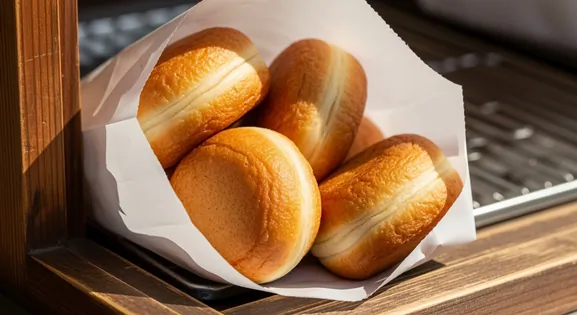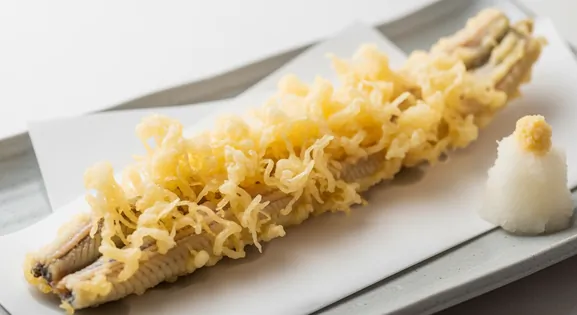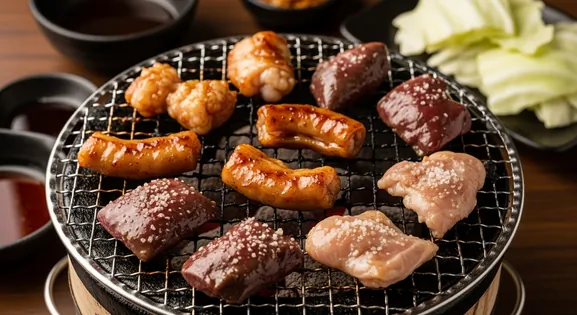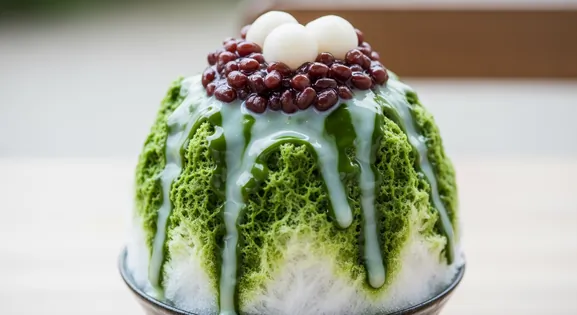
Agemanju (Deep-fried Manju)
揚げまんじゅうDeep-fried sweet bun with bean paste filling.
Tokyo's diverse food scene combines traditional izakayas, world-class sushi, and bustling street food markets. Navigate this culinary metropolis where centuries-old techniques meet modern innovation.
Despite the inner market's relocation, outer market vendors still offer fresh seafood and quality prepared dishes
Authentic yakitori alley with traditional atmosphere and decades-old establishments
High-quality prepared foods with impeccable safety standards
Shorter lines at popular restaurants and freshest preparations
Less crowded with better service and attention to food handling
Consider this culturally inappropriate - find designated eating areas
Many traditional establishments prohibit photography, especially high-end sushi restaurants
Tokyo's food culture represents Japan's meticulous attention to detail and seasonal ingredients. From humble ramen shops to Michelin-starred restaurants, Tokyo embraces both tradition and innovation. The city maintains strict food safety standards, with vendors taking pride in freshness and presentation across its distinct neighborhoods.
Dishes like hiyashi chuka and zaru soba are prepared fresh to combat summer heat
When temperatures exceed 86°F (30°C), choose indoor vendors with proper refrigeration
Shabu-shabu and sukiyaki establishments prepare fresh ingredients at your table
For cherry blossom picnics, purchase boxed meals (bento) from department stores rather than street vendors
Deep-fried sweet bun with bean paste filling.
Crispy battered saltwater eel, delicate and flaky.
Prepared seafood atop vinegared rice, traditional Tokyo-style.
Grilled beef or pork offal with diverse textures.
Rice bowl topped with variety of fresh raw seafood.
Fluffy shaved ice with syrups and various toppings.
Crispy puffed rice with nuts in hardened syrup.
Fukuoka blends centuries-old food traditions with modern culinary innovation, famous for its yatai food stalls and authentic tonkotsu ramen. Navigate this vibrant port city for extraordinary street food experiences with proper safety precautions.
Sapporo's culinary landscape blends Hokkaido's finest seafood with hearty winter specialties like miso ramen and lamb jingisukan. Navigate this northern Japanese city's diverse food districts from local izakayas to bustling markets.
Discover East Asia's diverse culinary landscape, from Japan's meticulous sushi to China's regional specialties. Learn essential food safety tips for navigating seasonal changes while experiencing authentic cooking techniques.
Explore Europe's diverse culinary landscape, from Italian trattorias to Spanish tapas bars and French bistros. Discover essential safety practices while navigating seasonal markets, street food festivals, and authentic regional specialties across this gastronomic paradise.
Discover Latin America and the Caribbean's vibrant culinary landscape, from Mexico's spicy street tacos to Brazil's churrasco and Caribbean seafood delicacies. Navigate distinctive regional preparation methods while ensuring safety across diverse climates and bustling mercados.
Discover Oceania's diverse culinary landscape, from Australia's modern fusion to traditional Polynesian earth ovens. Learn essential food safety tips for navigating tropical conditions while experiencing authentic Pacific Island cooking techniques and fresh seafood.
Navigate Southeast Asia's vibrant street food scene, from Thailand's aromatic curries to Vietnam's fresh herbs and Malaysia's spice blends. Discover essential safety practices for enjoying authentic flavors while managing tropical climate challenges.
Discover South Asia's vibrant culinary landscape, from India's aromatic curries to Nepal's hearty dumplings. Learn essential food safety tips for navigating diverse street food scenes while experiencing authentic flavors in Delhi, Mumbai, Kathmandu, and Colombo.





